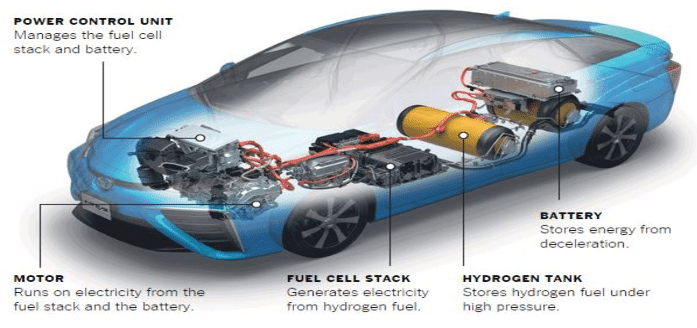Embarking on the journey of understanding electric vehicles requires a closer look at the intricate machinery that powers them. In this article, we delve deep into the world of “Components Of An Electric Car,” unraveling the technological marvels that drive the sustainable future of transportation. Join us on this informative exploration of the key elements that make electric cars the cutting-edge vehicles of today.
The Electric Motor: Powering the Drive
At the heart of every electric car lies the electric motor, the powerhouse responsible for converting electrical energy into mechanical energy. Unlike traditional internal combustion engines, electric motors provide a seamless and efficient drive by generating instant torque. The simplicity of the electric motor contributes to the overall reliability of electric cars, making them a preferred choice for eco-conscious drivers.
The Battery Pack: Energizing the Journey
Perhaps the most iconic component of an electric car is its battery pack. Acting as the energy reservoir, the battery pack stores electrical energy and supplies it to the electric motor when needed. Advances in battery technology have led to increased energy density, allowing for longer ranges and faster charging times. Lithium-ion batteries, in particular, have become the standard for electric vehicles, offering a balance between energy capacity and weight.
Power Electronics: Managing the Flow
To ensure a smooth transition of energy between the battery pack and the electric motor, electric cars rely on power electronics. This component comprises inverters, converters, and controllers that manage the flow of electrical energy. Power electronics play a crucial role in optimizing efficiency, converting direct current (DC) from the battery to alternating current (AC) for the motor, and vice versa during regenerative braking.
Charging System: Energizing for the Road Ahead
While not an intrinsic part of the vehicle itself, the charging system is a vital component in the electric car ecosystem. It includes the charging port, onboard charger, and, in some cases, a bidirectional charger. The charging system facilitates the replenishment of the battery pack, and advancements in fast-charging technologies continue to make electric cars more practical for daily use.
Regenerative Braking System: Harnessing Energy
A standout feature in electric cars is the regenerative braking system. Unlike traditional braking systems that dissipate kinetic energy as heat, regenerative braking captures and converts this energy back into electrical energy. This innovative system not only enhances energy efficiency but also contributes to the extended range of electric vehicles.
Electric Vehicle Thermal Management: Keeping Cool Under Pressure
Efficient thermal management is essential for the optimal performance and longevity of an electric car’s components. Cooling systems prevent the electric motor and battery pack from overheating during operation. Advanced thermal management technologies, such as liquid cooling systems, ensure that electric cars can operate under various conditions without compromising performance.
Read too: The Importance of Electrical Diagnostic Testing for Cars: Decoding Car Issues
Electronic Control Unit (ECU): The Brain of the Operation
Coordinating the functions of various components in an electric car is the Electronic Control Unit (ECU). Often referred to as the “brain” of the vehicle, the ECU manages and regulates key systems, including the electric motor, battery, and charging system. Its ability to make real-time adjustments contributes to the overall efficiency and safety of electric cars.
Structural Components: Form and Function in Harmony
Beyond the electric-specific components, the structure of an electric car is designed with both form and function in mind. Lightweight materials, such as aluminum and carbon fiber, contribute to energy efficiency and range. The layout of components is carefully considered to optimize aerodynamics and enhance the overall driving experience.
Conclusion: Driving into a Sustainable Tomorrow
As we dissect the various components of an electric car, it becomes evident that these vehicles are not just modes of transportation but marvels of engineering. The synergy between the electric motor, battery pack, power electronics, and supporting components creates a sustainable and efficient means of travel. With ongoing advancements in technology, electric cars continue to redefine the future of transportation, offering a cleaner and greener alternative to traditional vehicles.
